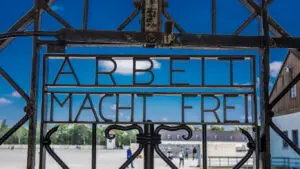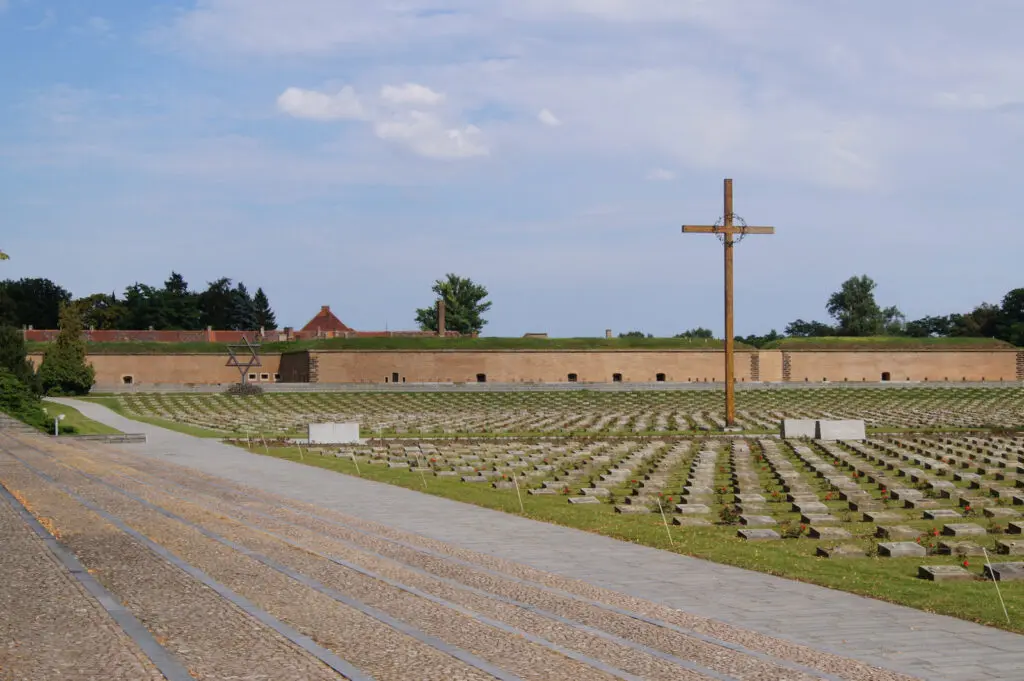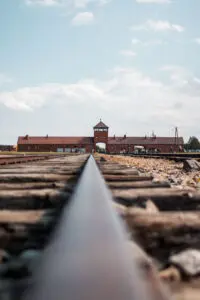Dark tourism is defined as tourism involving visiting places associated with tragedy, death and grave suffering.
The faces of evil can be traced all around the world. The following sites from arguably the darkest period of Europe’s history, WWII, stand today open for visitors as eternal mementos, reminding the public of the events that should never happen again.
The typical traveler who wants to learn about the countries there are visiting therefore typically chooses a balanced mixture with sites of historic, artistic and architectural significance. For this reason the historical choice very often falls on scenes of dark history. WWII left behind quite a few.
Jump to a section of this article
The anatomy of vulnerability
From 1933 to 1945 Nazi Germany operated more than a thousand concentration camps all around its territory and on the occupied lands. The institutionalized discriminatory practises targeted people due to their ethnicity, religion, political beliefs, sexual orientation and state of health. Besides the political opponents of Nazi Germany, among the first victims were adults and children with mental illnesses, physical deformities and serious psychiatric disorders. The weakest and most vulnerable who were already treated in hospitals therefore could be exterminated unobtrusively. The unprecedented systematic killing took the lives of altogether 17 million people, 6 million Jews and 11 million others. None of the victims of the Holocaust believed that another nation or their own people could execute such an evil plan.
The camps
There were no national camps until WWII. The first concentration camps were established in Germany and any vacant factory, castles, fortresses, workhouses or other convenient structures that could hold prisoners were deemed suitable. Soon a wide network of main and subcamps was established including in the occupied countries. Concentration camps were used for the detention of civilians seen as real or perceived ‘enemies’ of the Third Reich. In forced-labor camps the Nazi regime brutally exploited the labor of prisoners both for economic gain and to meet work shortages. Transit camps were usually the last stations before sending Jews to killing centers and death camps which were established exclusively for the systematic murdering of people. In prisoner-of-war camps mostly Polish and Soviet soldiers were sent.

Dachau
Dachau was the first camp, opened in 1933 with the longest operation until its liberation in 1945. Primarily used for political prisoners, it was put into service very soon after the Nazi regime rose to power. Over that period over 200,000 people were imprisoned at Dachau and 31,951 of them died. Situated near Munich, Germany.
Sachsenhausen
Prominent political personalities were incarcerated in this camp near Berlin. Among those were Herschel Grynszpan, the assassin of Ernst von Rath, a German diplomat in Paris. This case served as a catalyst for ‘Kristallnacht’, a night of mass terror visited upon Germany’s Jews by the Nazis. The most famous was Paul Reynaud, a French politician and Prime Minister of France who resigned rather than sign an armistice with Nazi Germany. And at last but not least the oldest (legitimate) son of Joseph Stalin, Yakov Iosifovich Dzhugashvili, who actually died here.
Mauthausen
Mathausen was pened at the time of the Anschluss of Austria to Nazi Germany in 1938 and was the last camp liberated by the Allies. The Mauthausen concentration camp soon became Europe’s largest labor-camp complex with its innumerable subcamps. Inmates were the toughest incorrigible political enemies of Nazi Germany. People were exterminated here through forced labor. The camp was situated near Vienna and its nickname was ‘Knochenmühle’ which literally means ‘bone-mill’.

Terezín
There was a hybrid concentration camp established in Terezín, north of Prague, in 1941 by Czech Jews. WIth its fortresses and army barracks, it was ideal for the Nazis’ purposes. The first transports with Austrian and German Jews arrived a year later. It was both a labor camp and a transit camp or waystation to an extermination camp. Theresienstadt also served a propaganda role as it was portrayed as a ‘retirement settlement’ for elderly and prominent Jews, intended to mislead their communities about the Final Solution. It was governed by a Jewish self-administration and the large number of prominent Jews led to a flourishing cultural life in this camp. It was Terezin which the International Red Cross were invited to visit when they were inspecting the conditions the Nazis were creating for the Jews they had rounded up. The spiritual legacy of the Terezín Ghetto is unique. As well as the public relations uses of the garrison town, political prisoners and opponents of the Nazi regime in Czechoslovakia were imprisoned in inhuman conditions in the Small Fortress. There they were tortured and executed. While the museum of the ghetto, in the town, bears witness to the hundreds of thousands of Jews who passed through the town, the exhibitions at the small fortress concentrate on the stories of the prisoners, mostly Czech, who suffered and died there. A recent addition to the permanent exhibitions is a section on Terezin’s role as an internment camp for Germans after WWII ended.

Auschwitz
An enormous complex of main and subcamps, where among many others, Poles, and Hungarian Jews found their death. The camps in and around Auschwitz had become the major sites for the Final Solution of the Jewish Question. The concentration and extermination camp near Krakow is today a UNESCO World Heritage site. Of the 1.3 million people sent to Auschwitz, 1.1 million died by Zyklon B gas poisoning, including some 960,000 Jews. Auschwitz was the most prolific of the extermination camps.
Dark History Sites in Nuremberg
Nuremberg has two places which are strongly connected to the Nazi Germany, the first to its beginning and the other to its end.
The Nazi Party Rally Grounds and the Documentation Center
The Nazi Party Rally Grounds with the museum in the building ‘embracing’ the field where combat vehicles and Nazi soldiers used to gather during the Nazi regime are stunning in size. Staring at it from the outside you understand how a building is able to radiate fear. The exhibition inside is a chilling examination of the origins, development, and methods of Hitler and the Nazi movement.

The Memorium Nuremberg Trials
Regardless of whether you have or haven’t visited any of the above listed sites of Europe’s darkest period of history, entering the courtroom in the Nuremberg Palace of Justice where leaders of the Nazi regime had to answer the questions before they were sent further to the International Military Tribunal will fill your heart with pain and your eyes with tears. And still the experience is somewhat liberating. The room where the spiritual and actual inventors of this evil plan were brought to justice is a fitting end to an itinerary that includes any of the above mentioned sites.
Planning a Dark Tourism Trip in Europe
We realize that such a trip should be approached and planned with sensitivity. Our expert European travel advisors and trip planners are at your disposal to craft a custom itinerary, and will help you balance these difficult sites with other experiences that will lighten your mood.

Charlie is head of marketing at JayWay Travel. A long-term Prague resident, his interests are cooking, eating out, cycling, skiing and of course, travel.